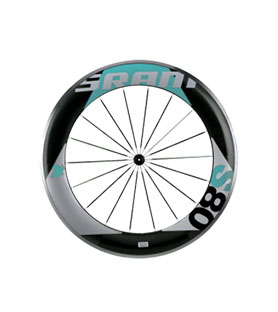
- Afrikaans
- Albanian
- Amharic
- Arabic
- Armenian
- Azerbaijani
- Basque
- Belarusian
- Bengali
- Bosnian
- Bulgarian
- Catalan
- Cebuano
- Corsican
- Croatian
- Czech
- Danish
- Dutch
- English
- Esperanto
- Estonian
- Finnish
- French
- Frisian
- Galician
- Georgian
- German
- Greek
- Gujarati
- Haitian Creole
- hausa
- hawaiian
- Hebrew
- Hindi
- Miao
- Hungarian
- Icelandic
- igbo
- Indonesian
- irish
- Italian
- Japanese
- Javanese
- Kannada
- kazakh
- Khmer
- Rwandese
- Korean
- Kurdish
- Kyrgyz
- Lao
- Latin
- Latvian
- Lithuanian
- Luxembourgish
- Macedonian
- Malgashi
- Malay
- Malayalam
- Maltese
- Maori
- Marathi
- Mongolian
- Myanmar
- Nepali
- Norwegian
- Norwegian
- Occitan
- Pashto
- Persian
- Polish
- Portuguese
- Punjabi
- Romanian
- Russian
- Samoan
- Scottish Gaelic
- Serbian
- Sesotho
- Shona
- Sindhi
- Sinhala
- Slovak
- Slovenian
- Somali
- Spanish
- Sundanese
- Swahili
- Swedish
- Tagalog
- Tajik
- Tamil
- Tatar
- Telugu
- Thai
- Turkish
- Turkmen
- Ukrainian
- Urdu
- Uighur
- Uzbek
- Vietnamese
- Welsh
- Bantu
- Yiddish
- Yoruba
- Zulu
Oct . 10, 2024 19:31 Back to list
Adjusting Front Derailleur on Mountain Bike for Optimal Shifting Performance
How to Set the Front Derailleur on a Mountain Bike
Setting the front derailleur on a mountain bike is a crucial part of bicycle maintenance. A properly adjusted front derailleur ensures smooth shifting between the two or three chainrings and enhances your overall riding experience. Here’s a step-by-step guide on how to set up your front derailleur effectively.
Tools You Will Need
Before you begin, gather the necessary tools a 5mm Allen wrench (or the appropriate size for your bike), a Phillips screwdriver, and a chain checker if available. Clean the drivetrain components as dirt and grime can hinder proper shifting.
Step 1 Understand the Components
The front derailleur is mounted to the bike frame and is responsible for moving the chain between the chainrings. Familiarize yourself with the major parts - Body The main structure attached to the frame. - Guide Plate The part that moves the chain. - Limit Screws These screws control the range of movement for the derailleur.
Step 2 Position the Derailleur
Begin by ensuring the front derailleur is positioned correctly. The bottom of the derailleur should be about 1-3mm above the largest chainring when the chain is on that ring. If the derailleur is positioned too high or too low, shifting performance will be compromised.
Step 3 Adjust the Limit Screws
how to set front derailleur on mountain bike

There are two limit screws on the front derailleur the High and Low screws. - Low Limit Screw This screw is responsible for defining how far the derailleur can move outward toward the larger chainring. When in the small chainring, the guide plate should not touch the chain. Adjust this screw until there's a slight gap (about 1mm). - High Limit Screw This screw determines how far the derailleur can move inward toward the small chainring. When shifting to the small chainring, the chain should transition smoothly without rubbing against the derailleur.
Step 4 Cable Tension Adjustment
Next, focus on the cable tension. To do this, shift your bike into the small chainring and the smallest rear cog. Leave the tension on the cable loose. Then, pull the cable tight and secure it with the derailleur’s cable clamp. If you're unsure about the tension, a good rule of thumb is to ensure you can’t pull the cable with your fingers after it’s tightened.
Step 5 Fine-tune Shifting
Now, shift through the gears. Observe how the chain moves from one chainring to another. If you encounter any hesitation or grinding noise, this may indicate misalignment or incorrect cable tension. Adjust the barrel adjuster located on the derailleur to add or reduce tension until you achieve smooth shifting.
Step 6 Test Ride
Once adjustments are complete, take your bike for a test ride. Shift under various conditions (uphill, downhill, and flat) to ensure the derailleur performs reliably across all scenarios.
Final Thoughts
Properly setting the front derailleur might take a little time, but the end result is a bike that shifts perfectly. Regular maintenance and quick adjustments can extend the life of your drivetrain, making your mountain biking experience more enjoyable. If difficulties persist after following these steps, consider consulting a professional bike mechanic. Happy riding!
-
The Ultimate Kids' Four-Wheeler Experience
NewsJul.09,2025
-
The Ultimate Guide to Mountain Bikes: Gear Up for Your Ride
NewsJul.09,2025
-
The New Age of Cycling: Electric Bikes for Every Rider
NewsJul.09,2025
-
The Best Kids Bicycles: Ride in Style and Safety
NewsJul.09,2025
-
The Best 3-Wheel Scooters for Kids: Fun, Safety, and Adventure
NewsJul.09,2025
-
Revolutionize Your Ride: Affordable Electric Bikes
NewsJul.09,2025
-
Finding the Perfect Mountain Bike for Every Rider
NewsJul.09,2025



